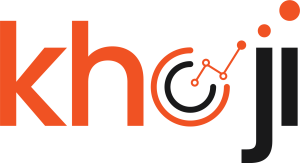Think about the last time one of your projects was delayed. Whether you were waiting on feedback, struggling to make an outdated system work, or trying to juggle reviews and approvals, most project delays are caused by one phenomenon: the bottleneck.
Like the neck of a bottle slows down the flow of water, a bottleneck in project management affects the workflow of a project. In a manufacturing process, a bottleneck is pretty easy to spot—it’s usually a physical place where the overall production process slows down because of a slow machine or raw materials. In software development, it’s a bit trickier to spot and resolve bottlenecks.
So, let’s take a look at what exactly a bottleneck in software development is, how you can identify one, and what you can do to successfully remove bottlenecks when they occur.
What is a bottleneck in software development projects?
A bottleneck is any point of congestion in a software development project that causes delays in the workflow. Bottlenecks in software development reduce the pace of the project due to limited capacity.
Here are some common bottlenecks:
- Manual Testing and Quality Assurance: Relying solely on manual testing processes can slow down development significantly. Human error and limited testing resources can lead to delays and decreased software quality.
- Inadequate Communication: Poor communication between teams and stakeholders can result in misunderstandings, changes in requirements, and scope creep, which can extend project timelines.
- Unclear Requirements and Scope: Ambiguous or changing requirements can confuse developers, leading to rework and project delays. This often results from inadequate initial analysis and documentation.
- Resource Constraints: A shortage of skilled developers, designers, or other key personnel can bottleneck the SDLC, causing delays in project delivery.
- Manual Deployment and Configuration: Manually configuring and deploying software can be time-consuming and error-prone, especially in complex environments.
Identifying what type of bottleneck, you’re dealing with is the first step in solving it. Once you know what type of bottleneck you are dealing with, you can dive deeper to pinpoint what exactly is causing the issue.
Strategies for removing a bottleneck once it’s happened
Depending on the complexity of the bottleneck, sometimes you may be able to remove it quickly by rearranging team members or allocating more resources to a specific stage in your workflow. However, sometimes a bottleneck will require more attention to reach a resolution. If you don’t address a bottleneck as soon as you identify it, the consequences can be costly and draining.
Here’s how you can remove a bottleneck once it’s happened.
- Automation: Implement automated testing and deployment processes to reduce manual effort and errors. Tools like Jenkins, Travis CI, and Docker can help automate repetitive tasks, ensuring consistent and reliable results.
- Continuous Integration and Continuous Deployment (CI/CD): Adopt CI/CD pipelines to streamline code integration, testing, and deployment. This approach enables frequent, smaller releases, reducing the risk of bottlenecks and accelerating time to market.
- Agile Development: Embrace Agile methodologies like Scrum or Kanban to improve communication, adapt to changing requirements, and prioritize customer value. Regular stand-up meetings and sprint planning sessions can keep teams aligned.
- Clear Requirements and Documentation: Invest time upfront to define clear, concise, and well-documented requirements. Regularly review and update documentation to ensure everyone understands project objectives.
- Resource Management: Cross-train team members and leverage outsourcing to address resource constraints. This flexibility ensures that you have the right skills available when needed.
- Performance Monitoring and Optimization: Continuously monitor and optimize your SDLC processes. Use metrics and key performance indicators (KPIs) to identify bottlenecks and areas for improvement.
- Education and Training: Invest in ongoing training for your development teams to stay up to date with the latest technologies and best practices. Well-trained teams are more efficient and produce higher-quality code.
Work Smarter – Use Khoji Copilot, Forget Bottlenecks
Remember, the key to a smooth and efficient software development lifecycle is vigilance and adaptability. By consistently monitoring and addressing bottlenecks, you can keep your projects on track, reduce delays, and achieve your development goals with confidence. And, when it comes to streamlining your agile project management and resolving bottlenecks, tools like Khoji Copilot can be invaluable in highlighting potential issues beforehand and tracking your team’s efforts, making your software development journey a smoother and more productive one.
Want to know how Khoji Copilot assists in identifying bottlenecks beforehand and plays a part in removing them efficiently? Book a demo now!



